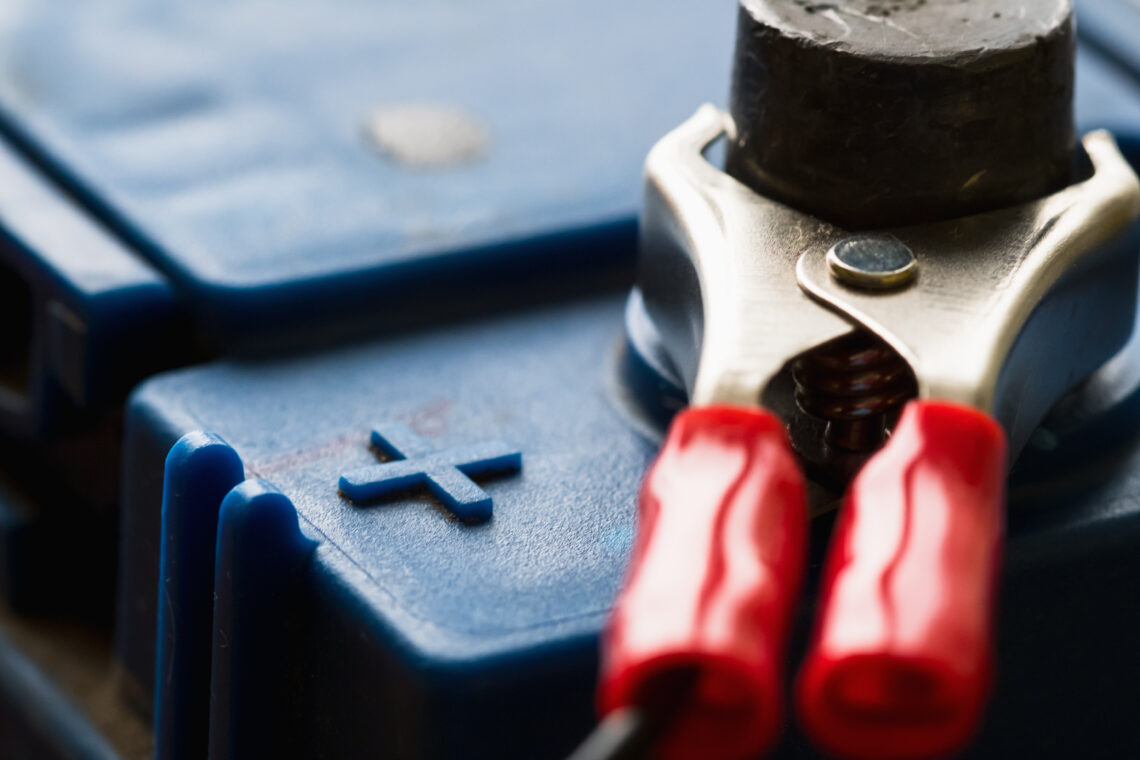Replacing your car battery is a routine cost of car ownership. When choosing a car battery replacement, you have many options as there are different types and brands of car batteries. You may also consider factors such as lifespan, cost, and required maintenance before buying a replacement battery.
To skip the hassles of car maintenance, check out how you can subscribe and discover a new way to drive.
What is a car battery and why is it important?
The battery in your car is a vital component to starting and running your vehicle. Like a regular battery, a car battery provides electricity to all the electrical components of your car, including lights, ignition, and controls on your front console. It works via a chemical reaction that occurs inside the battery when you start your engine. The chemical reaction produces electrical energy that powers the starter to ignite the engine. After starting the vehicle, the car battery’s job is to deliver steady voltage to run the engine while you’re driving.

Average replacement battery cost
Typically, a car battery will last for three to five years if properly maintained. Around this time you may start looking for a replacement battery before yours goes bad. The average cost of a battery ranges from $60 to $300 because there are many factors that determine the price. Cheaper car batteries have a shorter lifespan or are smaller, while more expensive batteries last longer.
Factors that affect car battery cost
Factors such as the battery type and your vehicle make and model also affect the car battery replacement cost. For example, smaller vehicles require less capacity and smaller batteries. A larger vehicle, such as an SUV or truck, may require a battery with a large capacity, which is often more expensive. The design of the battery also helps determine the price. Batteries that need maintenance cost less than maintenance-free batteries. If your battery has two types of connectors, this may cost more than a battery with a single connector type.
Cold cranking amps are a battery component that determines how well it handles cold temperatures. If you live in a region that experiences more extreme cold weather, the rating of cold cranking amps is important. You may pay more for a higher-rated cold cranking battery.
Your location can also affect the amount you pay to replace your car battery as well as the labor costs. The average cost of labor to install a new battery can be anywhere from $20 to $100. You can save on this expense by installing the battery yourself or by purchasing your battery from a parts store that includes installation.
What to consider when replacing your car battery
Other than cost, there are a few factors to consider when it’s time to replace your car battery. It’s helpful to learn about your options so you can spend your money wisely. Here is an overview of factors to consider.
Age of the battery
Ask yourself how old your battery is and if it’s nearing the end of its expected lifecycle. It can be beneficial to replace your battery before it no longer works.
To save on the expense, you can purchase a used battery as a replacement, but it’s important to know this battery’s age as well so you can determine how long it may last. Brand-new batteries last longer but are more expensive, and a used battery in good condition can be a cost-efficient alternative.
Battery maintenance
Car batteries may require maintenance, which is an added cost of money and time to consider. Gel batteries are a type that is maintenance-free. While the initial cost of a gel battery is more than a lead-acid or AGM type, not having to perform maintenance on the car battery for its longer lifespan could be worth it.
If you choose another type of battery, you can expect to perform maintenance such as cleaning, checking fluids, and charging your battery. A battery charger can cost anywhere from $30 to $350, depending on the voltage and model you get. If you’re unable to perform the maintenance on your car, then consider the cost of taking your car to a shop for maintenance.
Signs of a failing battery
Recognizing the signs of a failing battery can save you from getting stranded somewhere with a car that won’t start. Car batteries last a certain number of years based on the type of battery you have, so it’s useful to pay attention to the age of your battery. Other signs you can look for include:
- Dim or flickering headlights.
- Dashboard lights become dim.
- Difficulty starting your car.
- Inability of your car to hold charge for long after it starts.
Warranty and guarantees
When you’re shopping for a replacement car battery, you may also consider retailers who offer a warranty or guarantee with the battery. For example, manufacturers offer limited-time warranties to cover the cost of replacement for your car battery. This can be a good purchase because you may be able to get your next replacement for a lower cost or no cost at all. Guarantees that your battery functions properly and lasts for its expected lifespan can also be a good way to save money on future replacements.
Car battery brands and types
There are a few types of car batteries you can choose from, including lead-acid, lithium-ion, absorbent glass mat, and gel batteries.
Lead-acid batteries are the most common for a vehicle. They are also often the least expensive of car battery types. Lead-acid batteries are referred to as “wet cell” batteries because the are composed of cells that are submerged in an electrolyte solution of sulfuric acid and water. This type of battery requires you to check the fluids and add to the solution if it gets low or evaporates and exposes cells.
Lithium-ion batteries are for electric or hybrid vehicles. They’re light, hold more charge than other batteries, and they have a long lifespan. Lithium-ion batteries can also be quite expensive but are easy to maintain. Parts of this type of battery are recyclable, making this more of an eco-friendly choice.
Absorbent glass mat (AGM) batteries are similar to wet cell batteries, but they have a fiberglass mat inside the battery that separates cells and absorbs the electrolyte solution. This type of battery holds more power than a lead-acid battery and is best suited for modern cars. AGM batteries cost the most but often last longer than lead-acid batteries.
Gel batteries have silica in their electrolyte solution which turns the liquid into a gel. This prevents spills and evaporation. Gel batteries last the longest of the three most common types of batteries, and they never require maintenance.
Cost comparison of different battery types
There are three types of batteries, and this is the main factor in determining the cost of the battery. Check out this chart that compares the battery types and lists them as they’re priced from low to high.
| Type | Cost | Battery life |
| Lead-acid flooded | 100-160 | 3 years |
| Lithium-ion | 4,000-20,000 | 10-20 years |
| Absorbent glass mat | 200-325 | 5 years |
| Gel | 200-400 | 7 years |
Installation and maintenance
Installation and maintenance are other costs to consider when replacing your car battery. If you purchase your battery from an auto parts store, dealership, or car garage they may also be able to install the battery with added labor costs. You can also learn to install the battery by yourself by following a few simple steps.
When installing a new battery, turn your car off and give the engine time to cool, then open the hood and remove the old battery by disconnecting the battery terminals. You can do this by loosening the bolts on the terminals. Start with the negative side and then loosen the positive side. If there are clamps connecting your battery, unfasten these, then you should be able to lift your battery out of its holding. Car batteries may weigh 40 to 60 pounds, so use caution when lifting it out of the engine.
You can set the new battery in its place and reverse the steps you took to remove the battery. This means connect the positive terminal first and then the negative terminal.
Battery maintenance tips
To get the most out of your car battery, perform routine maintenance. This can include cleaning, charging, and inspecting the battery in your car. Keeping it in good condition can help ensure the battery lasts as long as intended and can prevent damage or operational issues, such as a dead battery. The following are simple maintenance checks you can do to make your battery last.
Clean and check the battery terminals
Battery terminals are electrical contacts that connect a vehicle to the battery. This connection is important for completing the electrical circuit that helps start and run your car. By keeping these terminals clean you can ensure your battery operates at full power and prevent damage that can lead to a faulty battery. Car battery terminals are made out of a lead alloy most often because this alloy is durable and lessens corrosion. However, corrosion can still build up on the terminals and should be cleaned off.
To clean the battery terminals, you can use simple products you already have in your home, such as baking soda, water and a toothbrush. Some use WD-40, which is a lubricant that can also help prevent rust and corrosion. If you have a steel wire brush, this may be more effective than a toothbrush, but either works. When cleaning, wear gloves and make sure your car engine is off and has time to cool down before touching it. If you’re using a homemade cleaner of baking soda and water, sprinkle the baking soda over the terminals and then wet the brush and start scrubbing. When you’re done, wipe the terminals and the battery with a clean cloth.
Charge your battery
You can get a battery charger for your car battery. Often these chargers can check the charge of your battery as well. If you drive your car often, it may not need to be charged very frequently because as you drive, the vehicle’s alternator recharges your battery. However, it’s a good idea to charge your battery every two or three months, especially if your car sits idle in this time.
To charge your battery, remove it from its holding tray if necessary. Most car batteries can charge while still in the engine. Before connecting your charger to the battery, make sure it’s turned off, then connect the positive battery charger cable to the positive terminal. The positive terminal will be marked with a “+” symbol, while the negative terminal will have a “-” symbol. Connect the negative terminal to the charger after the positive side is connected, and then turn on your charger to charge the battery. To determine how long you should charge your battery, check your vehicle’s owner’s manual.
Check battery fluid levels
It’s good to check the battery fluid levels for your vehicle once or twice a year. In a lead-acid battery, this fluid is called an electrolyte and is a mixture of water and sulfuric acid. Fluids naturally evaporate over time, and when these levels get low, the battery cells become exposed and risk damage.
To check the fluids, remove the ports from the top of your battery. These are plastic rectangular caps that cover the ports of each battery cell. The fluid levels should be even for all ports and you can check by shining a light in each port. If you need to add fluid you can add distilled water to the port. Then reseal the battery.
When it’s time to replace your car battery, there are many factors to consider. The type, brand, age, and maintenance of the battery can affect the cost and therefore affect your decision. If you want to avoid the hassle of routine car maintenance and expenses such as a battery replacement, subscribe to Flexcar and earn the freedom of driving without the responsibilities of owning or leasing the car.






